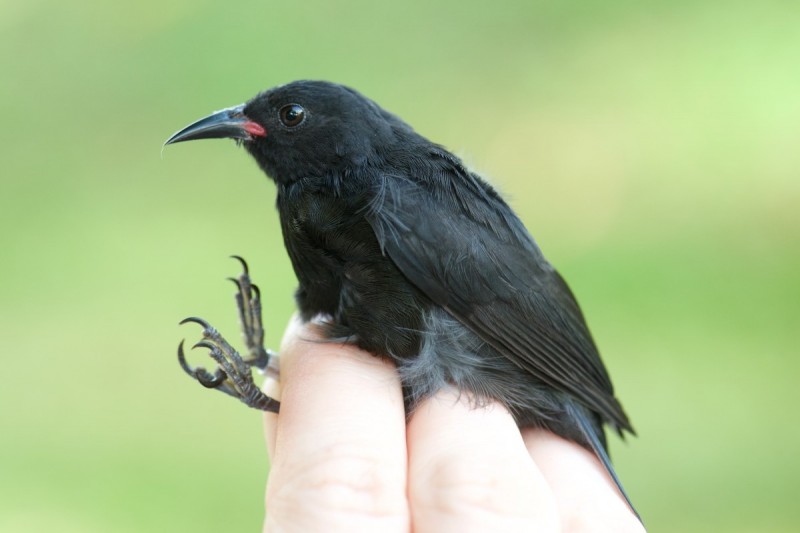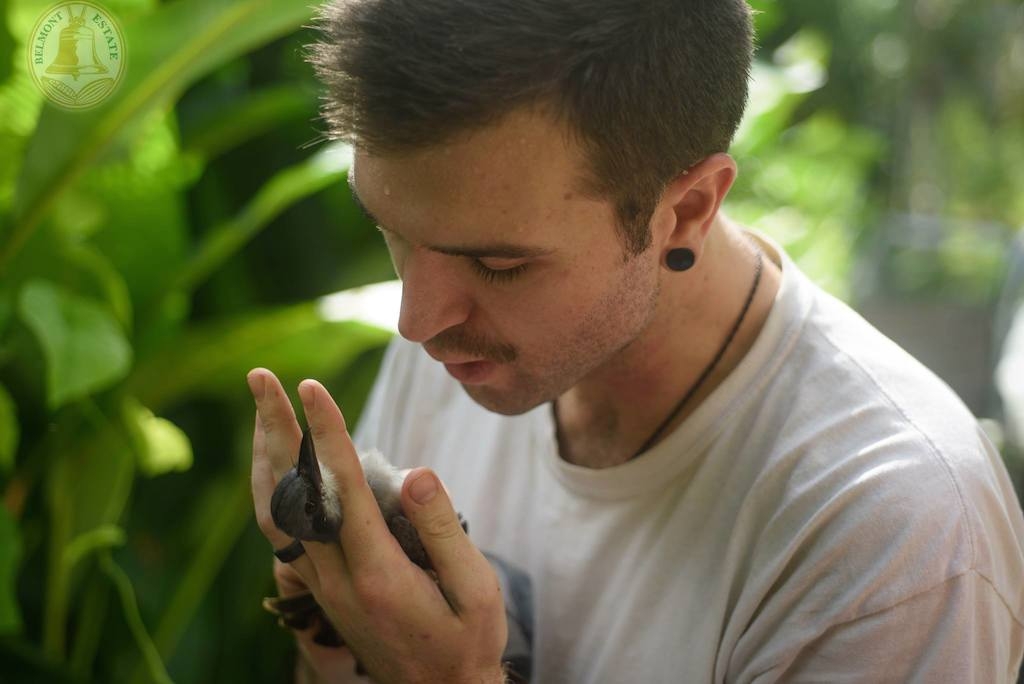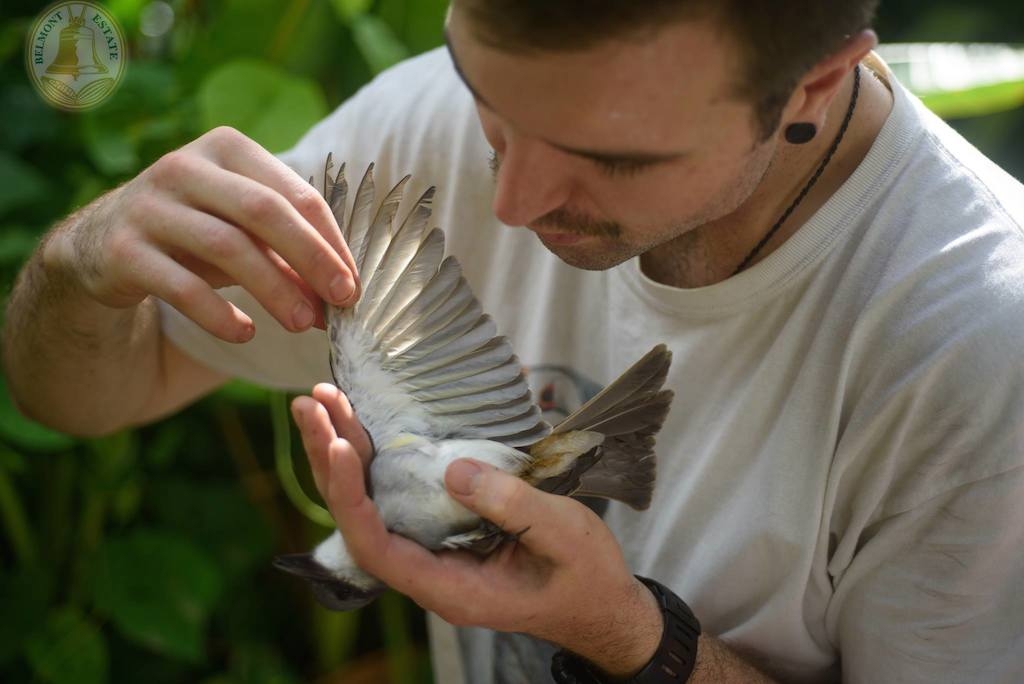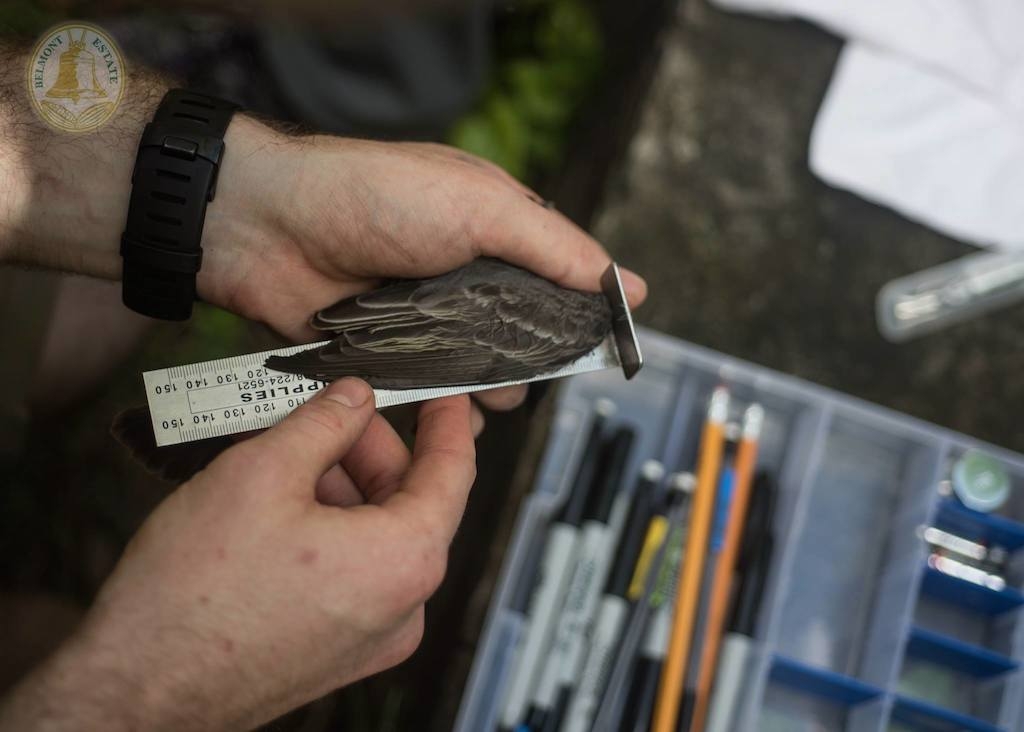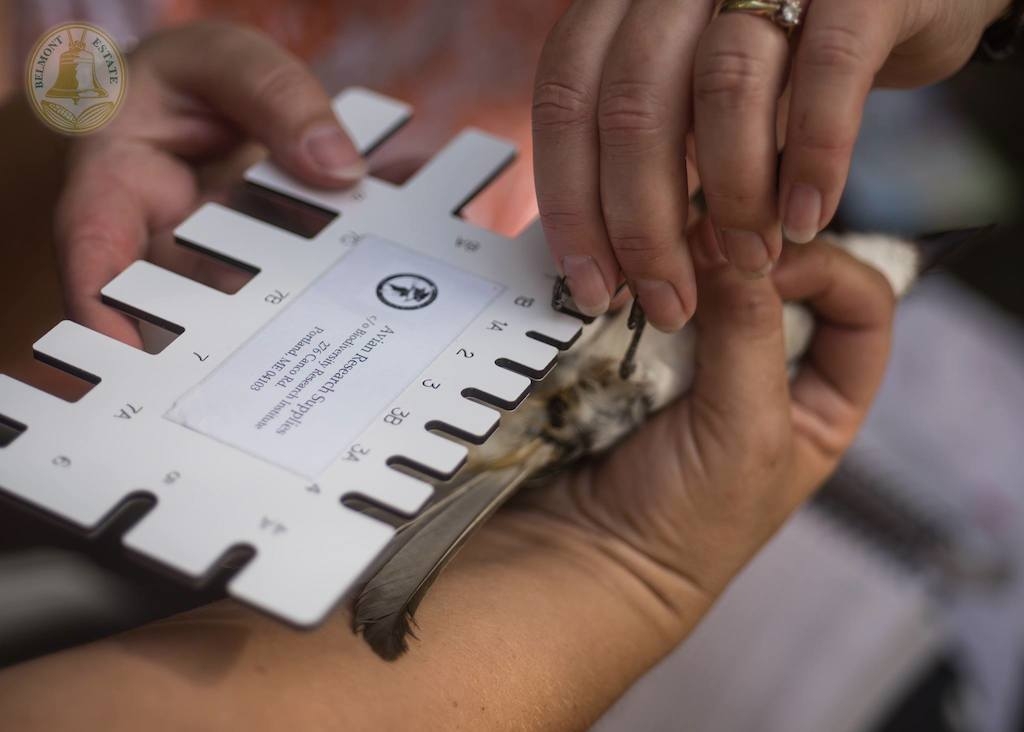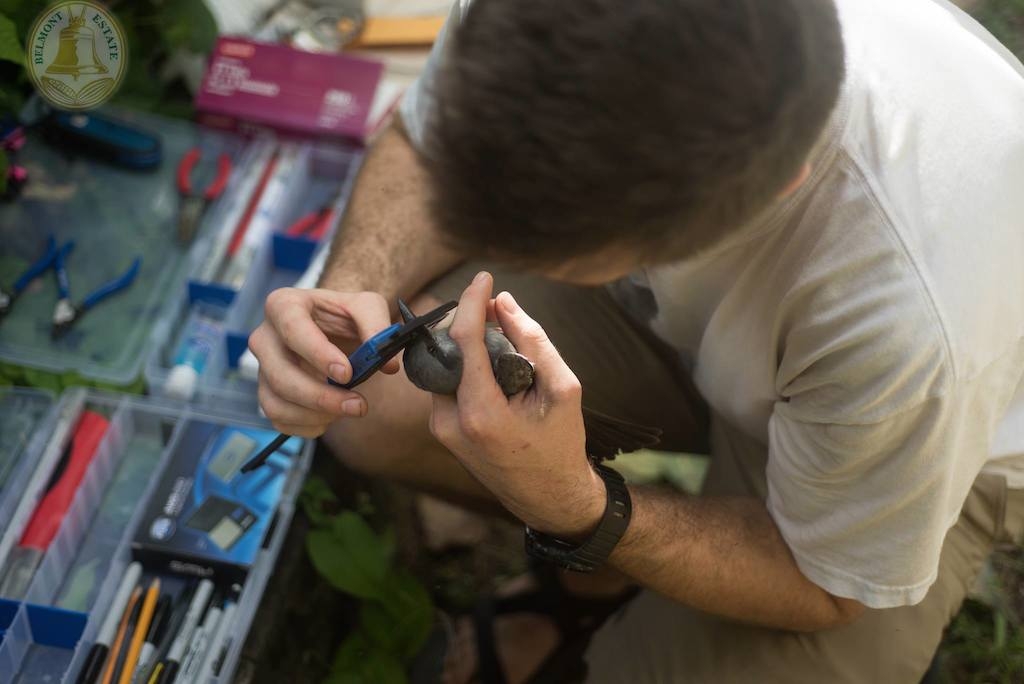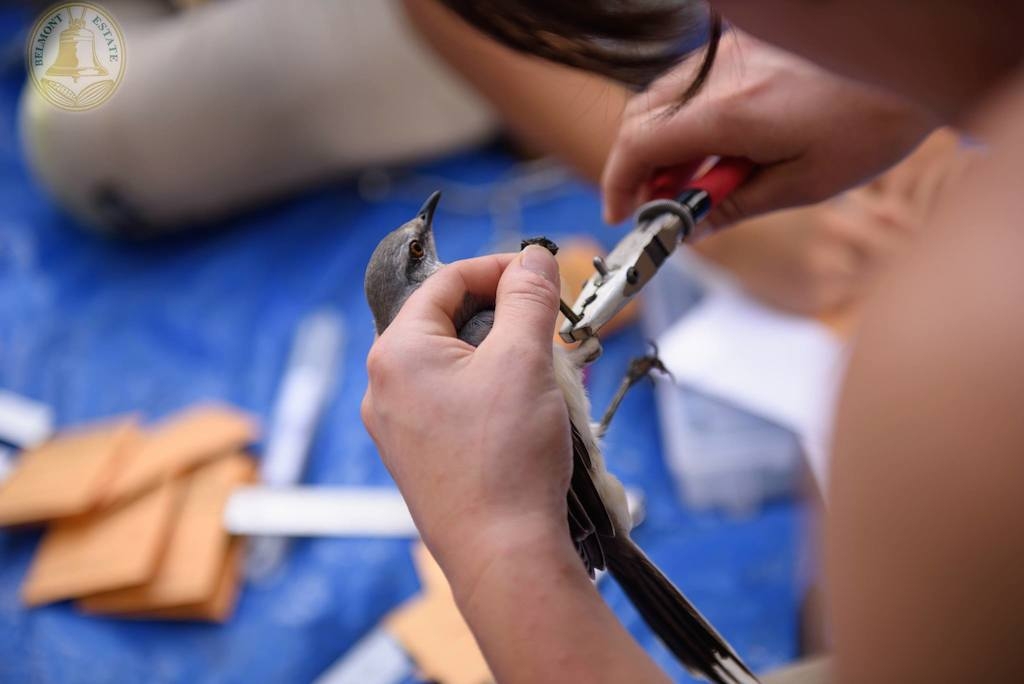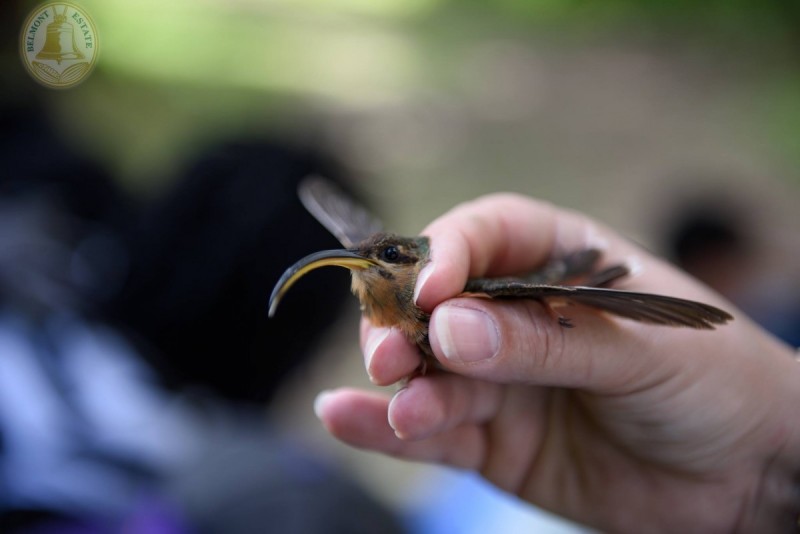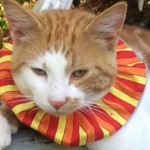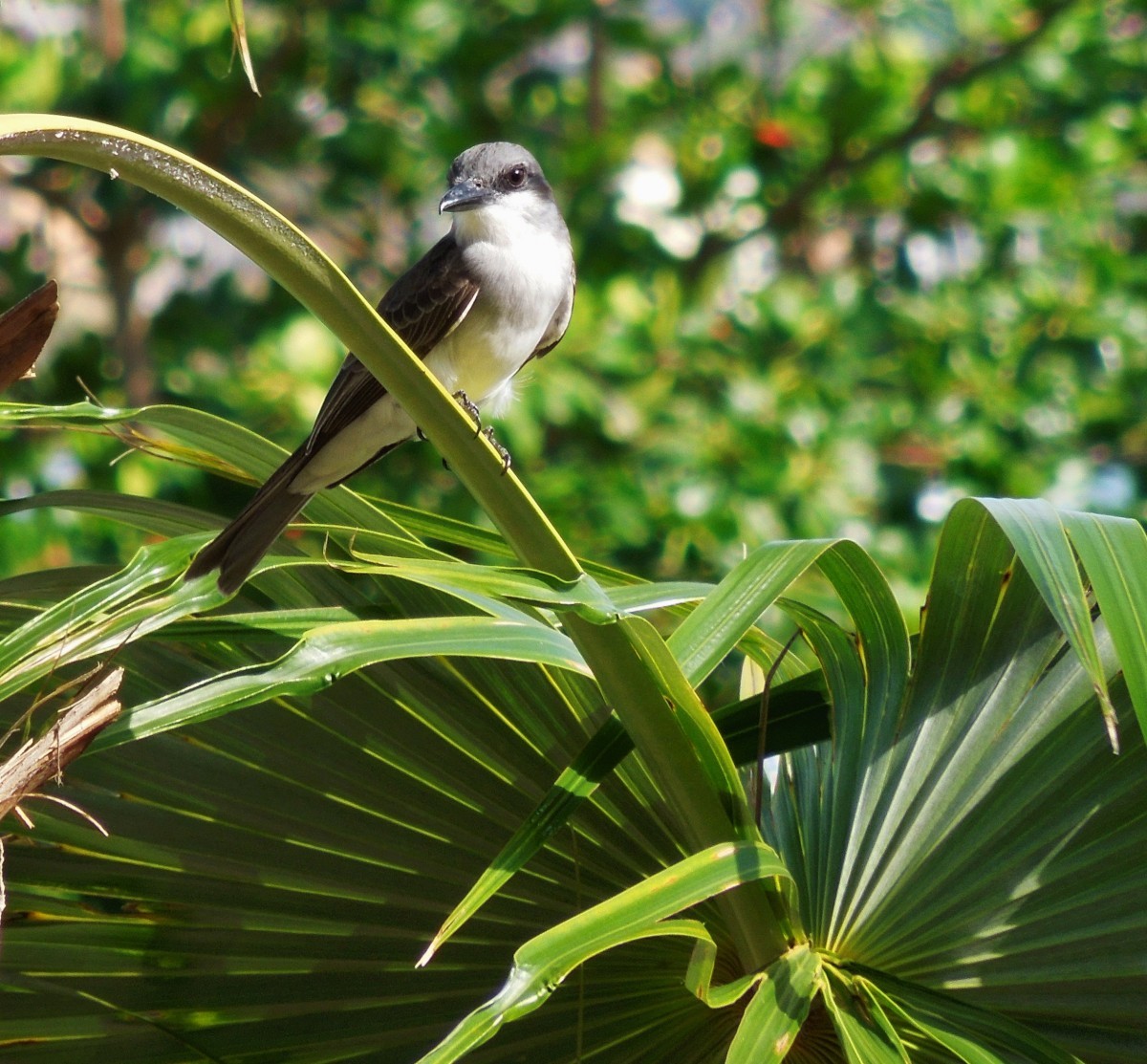
The gray kingbird // Photo: Michael Bell
Taking flight for first-ever survey of island’s birds
Nicola Koper and her three graduate students flew to the Caribbean island of Grenada on April 17 to continue the first-ever banding survey of most of the island’s birds, which she started in November last year.
Koper usually studies prairie songbirds, and she still does (she runs a groundbreaking study investigating how our oil and gas industry can operate without impacting birds—more on that below) but the main theme of her work is conservation, which is applicable to any ecosystem, including beautiful Grenada.
Surprisingly, up until this point, few people have explored and documented birds of Grenada’s agro-ecosystems. Koper selflessly stepped up for science and used her Discovery grant from NSERC, and received a University of Manitoba Research Grant, to take this burden on. Professor Andrew Horn, from Dalhousie University, will also join Koper and her students on this expedition.
UM Today wanted to learn a bit more about this field work so we sat down with the professor in the Natural Resources Institute.
UM Today: How does your research on prairie songbirds translate to this new environment?
Nicola Koper: We’re still doing a lot of work on conservation of prairie birds. Most of work is now actually done in Alberta because we’re looking at the effects of oil and gas development on grassland birds.
Our projects are all associated with conservation, and we’re interested in using our knowledge to conserve many species of birds, in Grenada as well.
But at the moment there is so little known about the birds of Grenada. We have to do absolute basic research to even understand the biology of the species. Once we understand their biology, we can get a better handle on what kind of conservation and management needs they have.
So what will you be doing?
We’re doing a bunch of projects right now. One is following up on some research that has been done on the Grenada hook-billed kite, and we’re combining that with new surveys on the Antillean broad-winged hawk. We’re going to do surveys once a month for eight to 10 months, across the whole island to see how their habitat use changes seasonally.
We’re also doing some banding. So we’re putting little metal bands on birds and releasing them so we can learn what their survivorship rates, site fidelity, and their reproduction success rates are. As far as we know this is the first study that has ever done banding for any of the species we’re looking at in Grenada, other than the bananaquit, and that work was done in the 70s and early 80s so it’s been a long time since anyone has looked at this species in Grenada.
We’re also doing basic morphological measurements. For some of these species there is no information on things like their wing length, tarsus length, bill width and depth—basic things that are necessary for describing species thoroughly.
How do you think the knowledge gained from this program be applied?
To be honest, we need basic information. Part of what we need to do is just contribute to natural history knowledge.
From a conservation perspective, there’s very little understanding of what species are using different habitat types, particularly in the agricultural parts of the island.
So if we better understand which species are doing well in the island’s ecosystems, then we’ll be better able to make some management recommendations. But I kind of hesitate with comments on management recommendations because it’s not my position to tell another country what to do. In Canada, sure, I feel justified in terms of making management recommendations. But with Grenada, we’ll primarily provide the information to the government and let them decide how to use it. If they ask for any suggestions, we’d love to help out.
Why go to these efforts? I can’t imagine there would be many who would pooh-pooh research on songbirds, but in case there are, what would you say to them?
I think we have to decide as a society what is important. It’s not my role to tell people what’s important, but I think a lot of people aesthetically appreciate songbirds and would consider the world a much poorer place if they weren’t there.
Personally, I don’t think we should conserve these birds only because they do stuff for us like control invertebrate populations or sing beautiful songs. I think they are important because they make the world a more interesting place.
You must dislike people who let cats roam free in urban areas?
Oh cats should stay inside. I’m sorry to say. It’s true. They are really really bad for songbirds. The bell is not helpful, but you know what is really helpful? There are these clown collars they sell for cats, and apparently they are really effective in terms of decreasing their ability to catch songbirds. Bells don’t work because cats learn to move in such a way that they don’t ring the bell, so they are usually not very effective. But it’s best to just keep your cat inside.
At the very beginning of our conversation you mentioned some work you’re doing with oil and gas development. Tell me more about that.
That is really exciting. I think we are really doing groundbreaking work.
We developed some tools that allow us to play the noise of oil and gas infrastructure, like pumpjacks, and oil well drilling noise without the infrastructure actually being there, and that allows us to understand what the effects of the infrastructures’ noises are compared to the effects of the infrastructure itself. This has given us a much better ability to determine what we might be able to do to minimize the effects of oil drilling and extraction in prairie ecosystems.
So far it seems that there are certain types of infrastructure that have more significant ecological effects than others. So that will allow us to make some recommendations about which types of wells should be promoted on the prairies.
It’s very clear that if we have less aboveground infrastructure—so less power distribution lines, fewer roads, things like that—that will also decrease effects.
But the effects that we have seen are generally not caused by noise or traffic or human activity. They are primarily driven by the infrastructure itself. So the road isn’t important because it allows traffic. The road is important because it acts as travel corridor for predators.
Oh, because now raptors can see songbirds easier, things like that?
Yup. It has a big effect on raptors and some mammals.
There are some things that can be done, and others that will be more challenging. You need roads to access and maintain wells. So I don’t know the solution to that particular problem. But we do know that power distribution lines seem to be making the problem worse and those can be buried. These are small lines that run short distances and you can bury those reasonably easily.
We can choose well pump types that have less of an impact too. Probably the less of an area that we dig up when we put in wells the better. So there’s lots of stuff that can be done and further improvement that can be made to minimize those effects.







